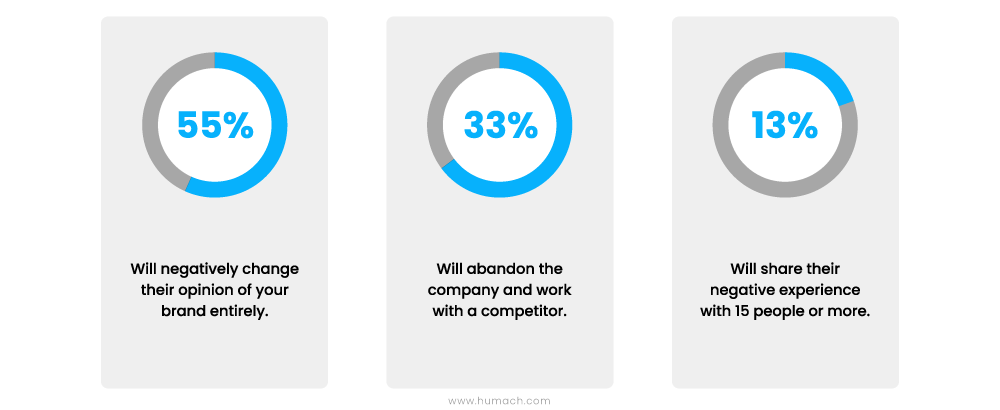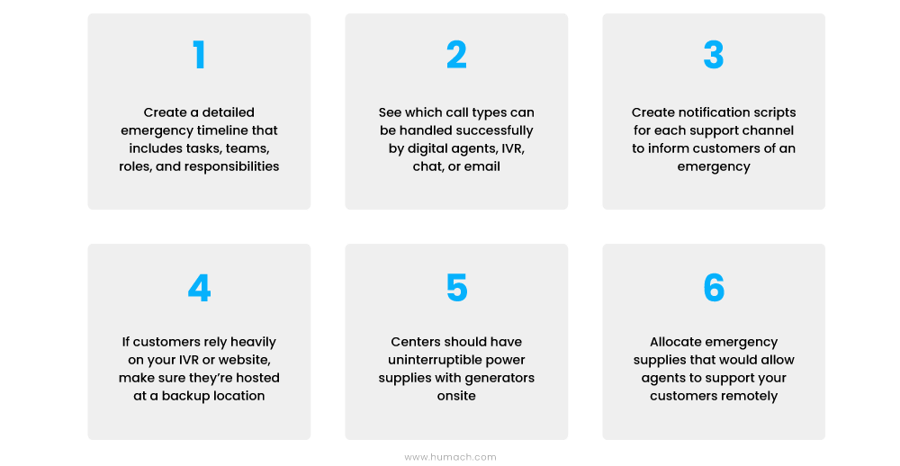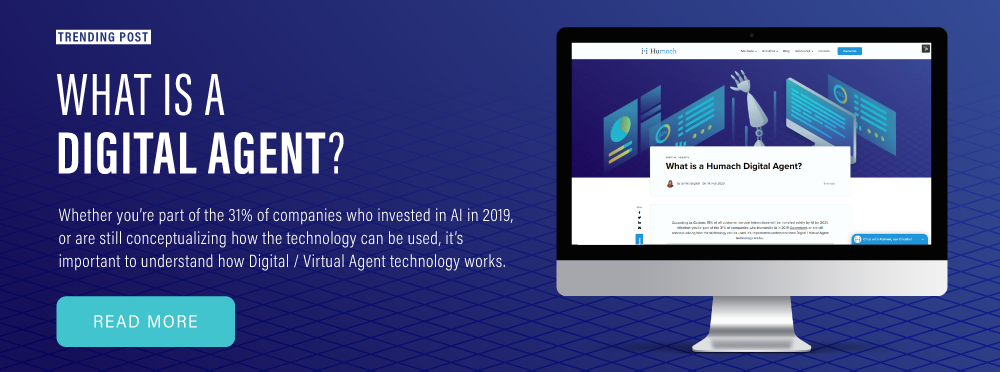What is a Humach Digital Agent?
According to Gartner, 15% of all customer service interactions will be handled solely by AI by 2021. Whether you’re part...
Read full article
What happens when businesses without disaster relief plans close or suspend services and support unexpectedly? For most businesses, to put it simply, bad things-- bad things happen.
Customers get busy tones, standard auto-attendant messages, hang-ups, or are put on hold for long periods of time with no explanation. E-mails, chats, and callbacks often go unresolved and customers get forgotten. Here's what happens next: 55% of customers negatively change their opinion of the brand entirely, 33% abandon the company for a competitor, and 13% share their negative experience with 15 people or more (SuperOffice). Once the existing customers have left and influenced the opinions of others, sales and revenue take a massive hit, leaving businesses with a costly recovery ahead.
55% of customers negatively change their opinion of the brand entirely, 33% abandon the company for a competitor, and 13% share their negative experience with 15 people or more (SuperOffice). Once the existing customers have left and influenced the opinions of others, sales and revenue take a massive hit, leaving businesses with a costly recovery ahead.
In 2018, PhoenixNAP reported that "More than 50% of companies have experienced a downtime event in the past five years lasting longer than a full workday"-- a statistic they called 'startling' and until recently, I think most of us would have agreed.
The disaster impact I listed above describes what happens for most businesses during a temporary operations delay (which is already difficult to recover from). Now consider the impact an emergency would have on the global economy if it were to stall the businesses responsible for providing everyday necessities or disaster aid and relief? Unfortunately, it's not that difficult to imagine anymore.
With respectful consideration to our current climate, the new Coronavirus (COVID-19) isn't simply a power outage or data breech. The WHO and CDC have labeled it 'a global pandemic' while the public remains divided between theories of prevention and propaganda. Regardless of which you choose to believe, the negative impact it's had on the global economy in the last 71 days is very real.
In efforts to contain the outbreak, quarantines have stopped global supply chains, causing widespread supply shortages. Indefinite suspensions on certain international travel and other service sector functions has started a negative economic ripple. Concerned for the safety of their employees and unsure when demand and revenue will return, businesses are laying off staff and closing their doors.
While most businesses' Disaster Relief or Business Continuity plans might have prepared them for power outages, data breeches, environmental disasters, or loss of staff, millions across the globe, are having the same thought, "what do we do now"?
Most people don't realize that 93% of companies without Disaster Relief or Recovery plans who suffer a disaster are out of business within one year. To ensure customer service, retention, and income without involving unnecessary spending, you have to analyze the impact that losing support would have on your operation.
Use your income-related KPIs or data from a previous halt in operations to determine what closures cost you per hour, per day, etc. Once you can quantify how much a stop in service has harmed, or could harm, your operations, you can then explore cost-effective solutions and justify investment.
You can avoid costly downtime by anticipating potential problems and developing an emergency strategy for agile decision making. Create a plan to minimize contact volumes while still retaining revenue and services:

Most businesses are fully aware of the impact disasters have on budgets and resources, and need a long-term, cost-effective solution that's implemented quickly and easy to scale during volume spikes. They must also be able to continually adjust to handle maximized efficiencies without lowering the quality of support.
While outsourcing or leveraging additional staff can help during surges, it isn't practical to maintain and may not be effective for certain types of emergencies. It's rarely cost-effective and requires additional time and resources to execute--ultimately leaving companies with expensive resources they have to maintain but won't always need.
AI-powered Digital Agents are the most valuable tool businesses can have when addressing service challenges that arise during a state of emergency. They provide instant, omnichannel support at any time, in more than 120 languages, with 100% security and compliance, and seamless escalation to humans, which circumvents any restrictions a disaster might contribute to in-house or outsourced support.
Another benefit of AI-powered Digital Agent technology is that it's hosted in a secure cloud environment, eliminating the need for new facilities or expansions to existing infrastructure. Businesses decide how they use Digital Agents-- whether just to meet increased demand or as a part of their long-term strategy.
As unpredictable as emergencies and disasters can be, they do happen. The first step to insure your business is adequately prepared is to incorporate AI-powered Digital Agents into relief, response, and contingency strategies. No matter how you use Digital Agents--whether they're an extension of your team or just emergency resources-- they'll help you avoid additional spending and backlogs, increase efficiency, improve customer experience and deliver helpful resolution in times of uncertainty.


Get CX tips, trends and best practices right to your inbox.
All the information you need, nothing you don't. Promise.
We'll never share your email address or spam you. We're not jerks.

.svg)
According to Gartner, 15% of all customer service interactions will be handled solely by AI by 2021. Whether you’re part...
Read full article© Humach, LLC | All Rights Reserved
Comments
Leave a Comment and Tell Us What You Think